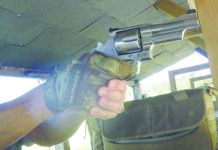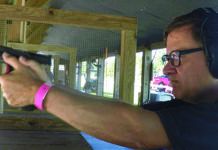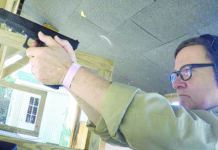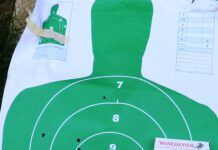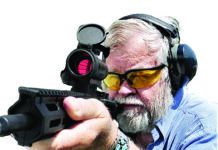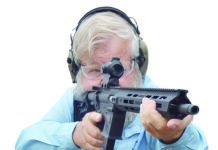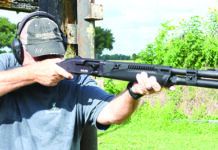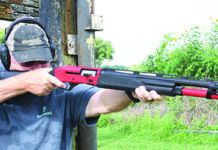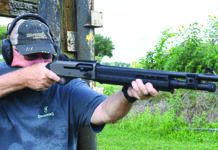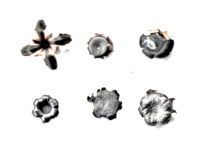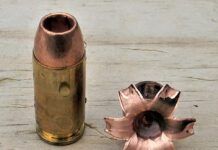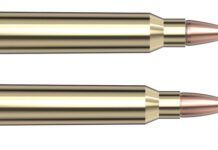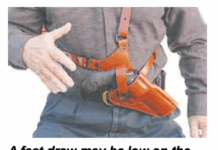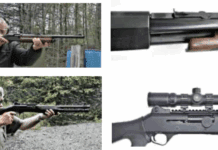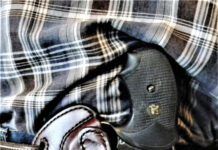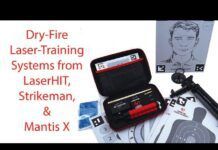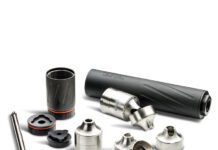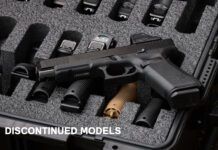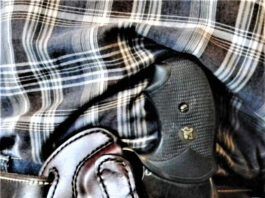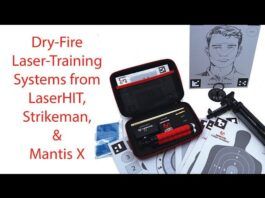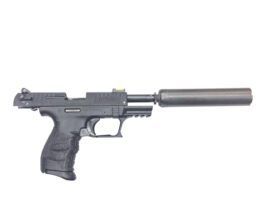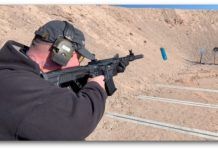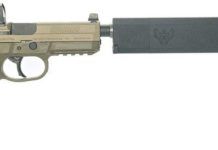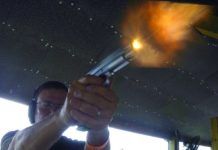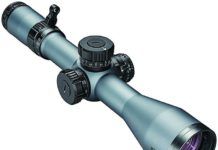American Tactical’s AR-15 Replacement Trigger
Hi everybody, this is Jamie with American Tactical. We're here at Range Day 2019. We are introducing the new Saf-T First trigger. This is an AR-15 trigger that will charge on safe. Your red trigger is your original trigger. This is what you are operating with now. You can fire it, but you cannot go to safe while it is open.
SHOT Show 2019: Shotguns, Ammo, Compact Pistols, and Aftermarket AR Trigger
At SHOT 2019, Gun Tests Editor Todd Woodard rustled up some interesting products that are beginning to appear this spring. Here's a quick look at new self-defense ammo from Browning and Winchester, a new shotgun from Armscor, new compact pistols in 9mm and 380 ACP from Springfield Armory, and a new drop-in trigger for your favorite AR-15 from American Tactical.
We Test Inside-The-Waistband Holsters for $50 and More
Shooters know that quality leather gear is increasingly expensive. Like a good shoemaker, workmen capable of making quality holsters are few and far between. For many of us, this means buying off-the-shelf holsters. In this installment, we test more than a dozen holsters from makers large and small. While we tried to keep the price around $100 or less, in several cases we went over. This was a result of the raters adding options such as special reinforcements and sweat guards.
Government Shutdown: No Suppressors for You!
As the government shutdown extends into its third week, suppressor buyers and dealers across the country have wondered: will the shutdown have an impact on suppressor transfers? The answer, unfortunately, is yes.
Testing Plastic and Kydex Holsters: The CYA Is a Bargain
The holster must have a balance of speed, security, and access. It cannot be buried under the clothing to the extent that it is difficult to access. A very fast draw isn't necessarily the main ingredient of a successful concealment rig. Good concealment that allows surprise is. Perhaps the adversary doesn't know you are armed, and he should not. There should be no indicators that show you are armed.
Let's look at reality. There is no draw faster than a standard belt holster carried on the point of the hip. This is also a holster that isn't compatible with concealed carry. The holster must be worn behind the hip under a covering garment at the least, and for better concealment, we move the holster inside the pants, or inside the waistband fashion as we call it. You must practice the draw to clear clothing, and is a real danger when clothing becomes tangled. The appendix carry requires less movement. Also, during the course of the day, you sometimes encounter people who like to bump into you or perhaps give a friendly pat. Some know you are armed; most should not. If they pat the groin area, they probably know you pretty well.
2018 Guns & Gear Top Pick: Programmable Automatic Powder Dispensers
Our reloading pursuits for handguns are generally to provide volume ammunition for training at a discount based on reusable cases and bullets purchased in bulk. The progressive reloading press is capable of producing more rounds per hour than our arms can withstand. But setting the powder drop to exact quantities can be trial and error, a time-consuming exercise of repeated drops to prime the new setting and weigh out the result. But what if the new load is not what you hoped? Using a programmable automatic powder dispenser enables the reloader to quickly develop multiple loads for test without having to reset your powder measure.
2018 Guns & Gear Top Picks: Top-Ranked Dry-Fire Trainers
Dry-fire training should be part of every shooter's training routine. It helps build the fundamentals of shooting and reinforces muscle memory. Enter technology, which offers a variety of high-tech lasers, laser-friendly targets, and apps that allows shooters to train in the comfort of their own homes, without the cost of going to a range and, further, without incurring the cost of ammo. The beauty of dry-fire training is you can do it any where you want and at any time. No loud noises, just the clicking of tripped firing pins and a flash of red laser, though some apps and target do have sound effects.
2018 Guns & Gear Top Picks: Firearms
Dry-Fire Trainers: Save Money While You Gain Performance
Dry-fire training should be part of every shooter's training routine. It helps build the fundamentals of shooting and reinforces muscle memory. In the old days, we bought a SnapCap or other dummy round, loaded it into our firearm, and practiced our grip, sight picture, and trigger press. You knew you were in a good place if you could dry-fire the firearm without flinching and keep the sights rock steady as the pistol fired. The fact is, however, you didn't know if you actually hit the target you were aiming at, nor was there a better way to measure training success and progress. Enter technology, which offers a variety of high-tech lasers, laser-friendly targets, and apps that allows shooters to train in the comfort of their own homes, without the cost of going to a range and, further, without incurring the cost of ammo. The beauty of dry-fire training is you can do it any where you want and at any time. No loud noises, just the clicking of tripped firing pins and a flash of red laser, though some apps and target do have sound effects.
Ed Brown’s Magazine Exchange Program Is Worth a Look
In this offer, Ed Brown is allowing customers to send old magazines of any make to upgrade to an Ed Brown Performance Magazine of their choice for only $10! It is a one-to-one exchange, so for every single magazine sent in, the customer can select one Ed Brown magazine of his or her choice, up to 20 magazines per exchange.
Police Department Implements Viridian Weapon-Mounted Camera
ViridianWeapon Technologies announces that the West Hennepin Public Safety Department located just outside of Minneapolis, Minnesota has deployed theFACT DutyWeapon-Mounted Camera (WMC) to all of its officers.
2018 Best New Optics for Rifles, Handguns, and Shotguns
We've had a chance to use quite a few new optics this year, including red dots, lasers, scopes, binoculars, and spotting scopes, while we have performed firearms testing for future issues. We shoot a lot of firearms every year, and with that round count comes the insight that what's on top of the guns matters as much as the gun itself in many cases. Following are a few recommendations for optics that have proven themselves as worthwhile complementary products in firearms evaluations, but which we haven't tested in head-to-head comparisons as yet.


